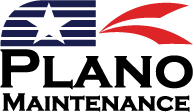Precision furnace tune-up benefits:
- Lower utility bills
- Extended equipment life
- Fewer repairs, breakdowns, and improved system reliability
- Peace of mind for you and your family
- Increased heating capacity
- Priority service scheduling
Precision air-conditioning tune-up benefits:
- Lower utility bills by reducing energy consumption and waste.
- Extended equipment life.
- Peace of mind for you and your family.
- Fewer repairs, and improved system reliability.
- Increased cooling capacity and efficiency.
Our exclusive precision tune-up procedure includes, as needed:
Furnace
- Inspect and tighten all electrical connections and terminals.
- Remove, clean, and adjust main gas burners.
- Remove, clean, and adjust ignition/pilot assembly.
- Thoroughly brush and vacuum clean the heat-exchanger(s) and combustion chambers.
- Inspect heat-exchanger(s) & combustion chambers for cracks, rusting, or problem areas.
- Vacuum out blower compartment; return airdrop, and surrounding area. (No duct cleaning)
- Clean all return air grills throughout the home.
- Inspect the flue assembly and test flue gas drafting mechanism.
- Test and inspect all furnace safety controls.
- Test and adjust gas pressure.
- Replace or clean standard air filters.
- Inspect blower motor, drive mechanism and fan assembly.
- Lubricate all fan motors and all moving parts.
- Measure and adjust blower for correct airflow.
- Adjust all dampers and set proper blower speed(s).
- Clean, level, test, and calibrate thermostat.
- Measure and record heating system output.
- Inspect and test thermocouple output as well as pilot safety switch.
- Measure and record electrical voltage, amperage, and component resistance.
- Inspect and test all system transformers, relays, contractors, and controls. Measure performance
- Repair minor air leaks in plenum and return airdrop.
- Perform a complete and thorough, room-by-room, electronic carbon monoxide check of the entire house.
- Advise customer on other ways to reduce energy consumption, improve safety and enhance comfort.
Air-Conditioning
- Chemically clean and thoroughly wash condenser coil(s).
- Thoroughly clean or replace standard air-filter(s).
- Wash and level condensing unit for proper motor and bearing wear.
- Lubricate motor and fan bearings as well as other moving parts as necessary.
- Clean and inspect evaporator coil and drain pan when readily accessible.
- Clean and inspect condensate drain lines and fittings.
- Clean, level, and calibrate thermostat.
- Adjust and thoroughly clean blower motor and fan assembly as needed.
- Inspect, tighten and test all electrical connections. This includes disconnect switch.
- Inspect all cooling system electrical wires, connectors, and terminals.
- Test system starting and running capacitors.
- Test all controls, switches, relays, transformers, contractors, motors, and fans.
- Measure starting and running amperes, line voltage, and control voltage.
- Test system-starting capabilities.
- Test system for proper airflow and air delivery.
- Inspect and adjust all safety controls.
- Monitor refrigerant (Freon) pressures and temperatures.
- Test and record super-heat and sub-cooling. Compare with factory specifications.
- Adjust Freon metering control device per factory/manufactures recommendations.
- Test and measure air-conditioning system for proper production and capacity.
- Monitor fan motors and compressor operating temperatures.
- Apply weather resistant protective coating to the outside unit. (Condenser)
- Complete and present full written report.

